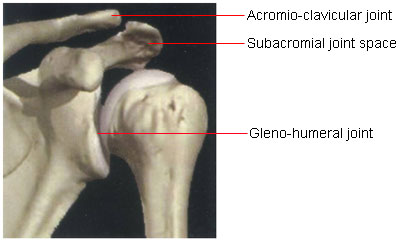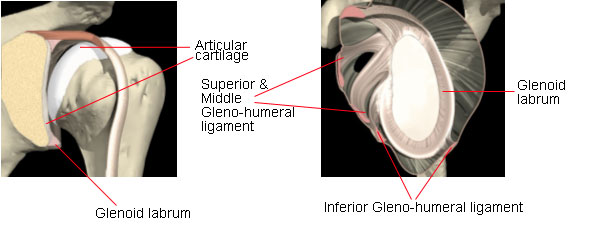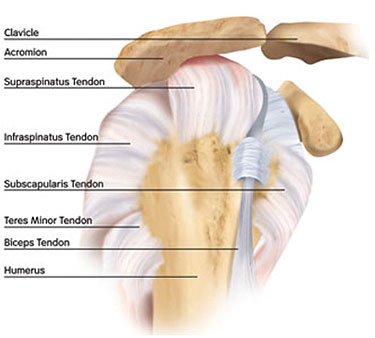The shoulder joint forms an important part of the “shoulder girdle” which is responsible for providing mobility to the upper limb. The shoulder joint consists of three articulations:
1. Gleno-humeral joint
2. Subacromial joint space
3. Acromio-clavicular joint (AC joint)

The Gleno-humeral joint consists of the bony articulation between the head of the humerus (arm bone) and the glenoid, which is the socket of the scapula (shoulder blade). The glenoid is very shallow and is deepened by a fibro-cartilaginous structure attached to its rim called the glenoid labrum. These bony surfaces are covered by a smooth glistening white structure called the articular cartilage. The joint is encased in a fibrous sheath called the capsule. The shoulder capsule is thickened in places to form ligaments (superior, middle and inferior gleno-humeral ligaments). The capsule along with the ligaments affords some stability to the shoulder joint.

The Acromio-clavicular joint (AC joint) is the articulation between the acromion (which is part of the scapula), and the clavicle (collar bone) which acts like a strut between the shoulder and the sternum (chest bone). As the AC joint overlies the rotator cuff, any affection of the AC joint can directly affect the rotator cuff.
The Subacromial joint space is the space beneath the acromion (between the acromion and the top surface of the humeral head). This space is outlined by the acromion and the coracoid process (which are parts of the scapula), and the coraco-acromial ligament which connects the two. This space contains the all important rotator cuff with the subacromial bursa overlying the rotator cuff.
The shoulder joint is powered by two sets of muscles – the deltoid muscle and the rotator cuff muscles. The deltoid muscle is the large bulky muscle mass which overlies the outer aspect of shoulder joint and which gives the shoulder its rounded contour. The deltoid is responsible for forward flexion, backward extension and lateral abduction (side ways movement) of the arm. The rotator cuff consists of the tendinous portions of four muscles – the supraspinatus, infraspinatus, teres minor and subscapularis. The rotator cuff is attached to the top end of the humerus from front to back, and lies inside the shoulder complex in the space between the top end of the humerus and the acromion (the subacromial space). The rotator cuff serves three important functions – (i) stabilizing the humeral head in the glenoid socket during shoulder movements, (ii) controlling inward and outward rotation of the arm, and (iii) fine tuning forward flexion and lateral abduction of the arm.
